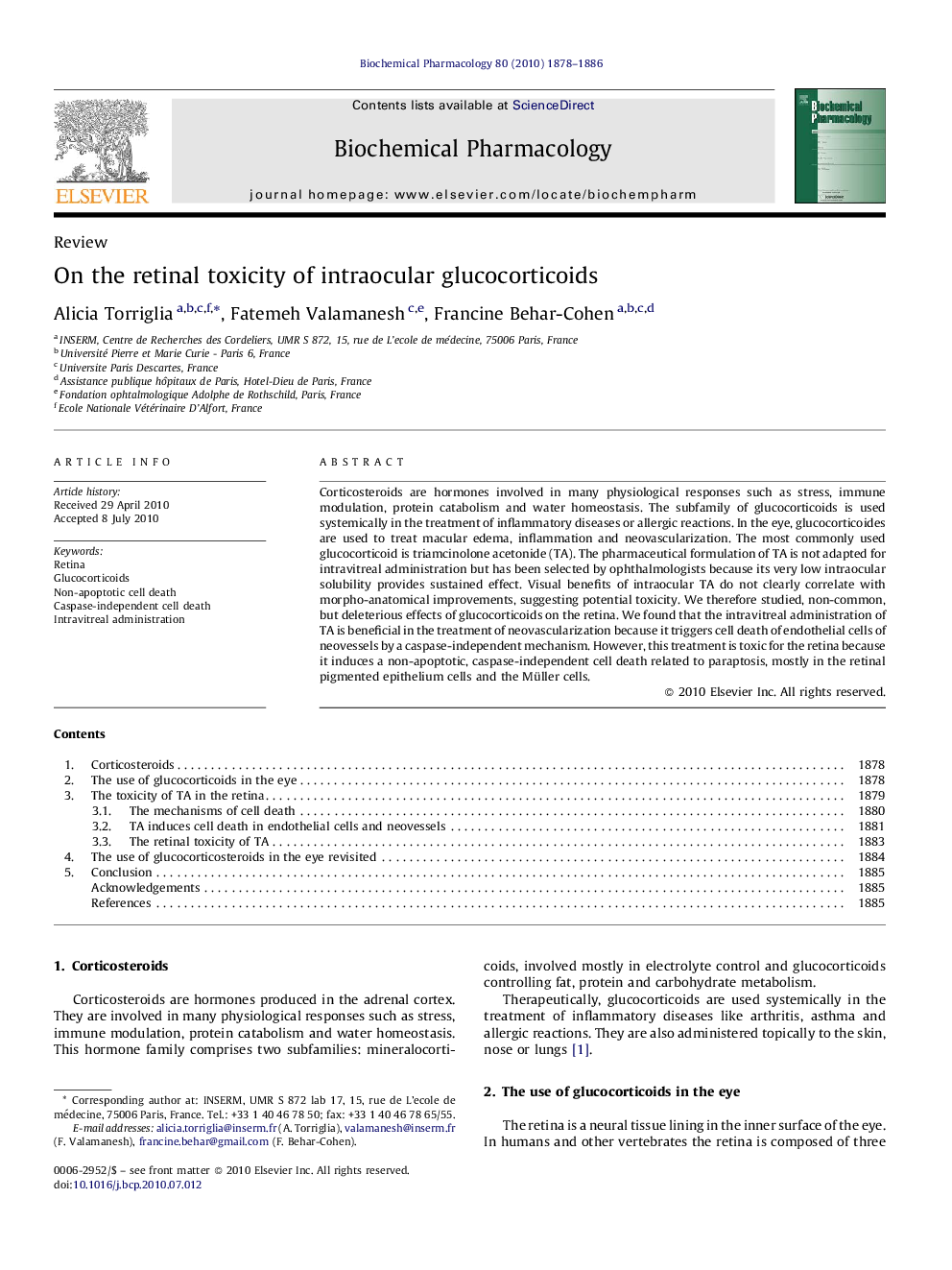| Article ID | Journal | Published Year | Pages | File Type |
|---|---|---|---|---|
| 2513250 | Biochemical Pharmacology | 2010 | 9 Pages |
Corticosteroids are hormones involved in many physiological responses such as stress, immune modulation, protein catabolism and water homeostasis. The subfamily of glucocorticoids is used systemically in the treatment of inflammatory diseases or allergic reactions. In the eye, glucocorticoides are used to treat macular edema, inflammation and neovascularization. The most commonly used glucocorticoid is triamcinolone acetonide (TA). The pharmaceutical formulation of TA is not adapted for intravitreal administration but has been selected by ophthalmologists because its very low intraocular solubility provides sustained effect. Visual benefits of intraocular TA do not clearly correlate with morpho-anatomical improvements, suggesting potential toxicity. We therefore studied, non-common, but deleterious effects of glucocorticoids on the retina. We found that the intravitreal administration of TA is beneficial in the treatment of neovascularization because it triggers cell death of endothelial cells of neovessels by a caspase-independent mechanism. However, this treatment is toxic for the retina because it induces a non-apoptotic, caspase-independent cell death related to paraptosis, mostly in the retinal pigmented epithelium cells and the Müller cells.
Graphical abstractFigure optionsDownload full-size imageDownload as PowerPoint slide
